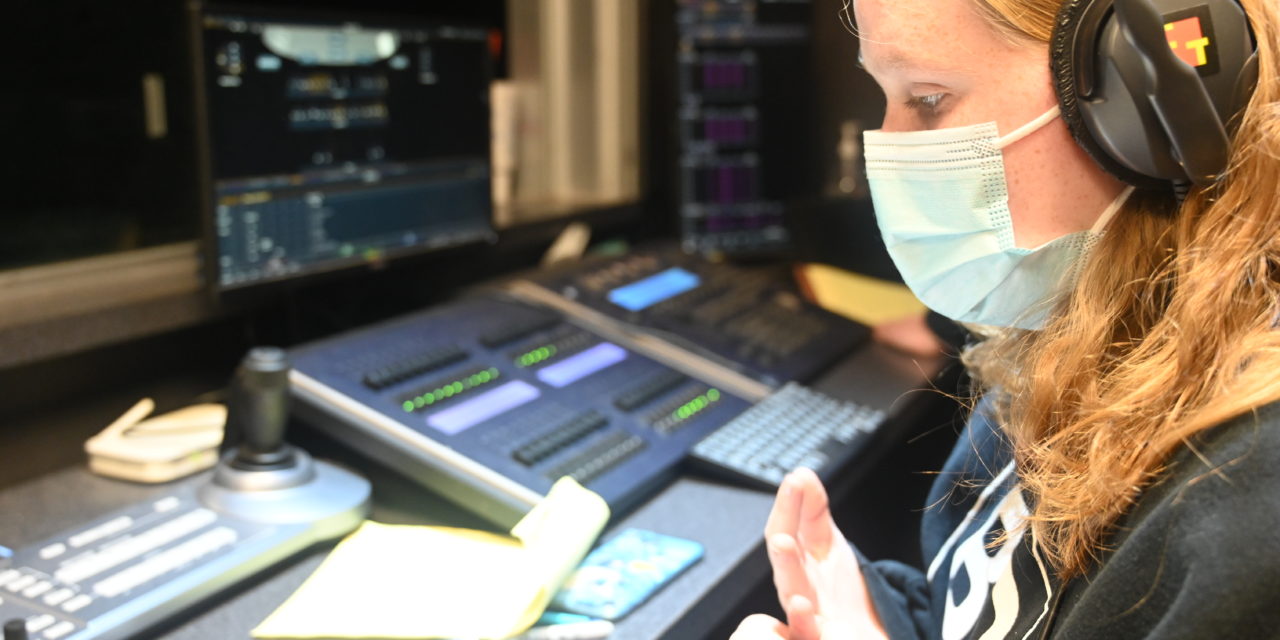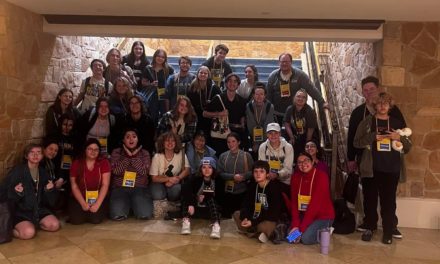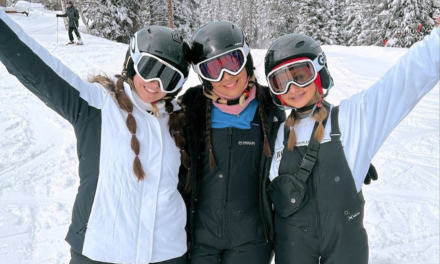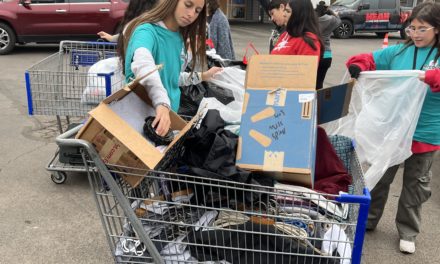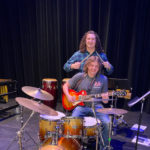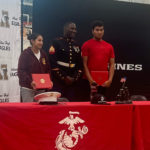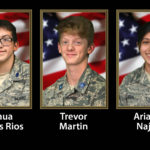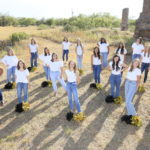By Samantha Connelly
The many late nights spent preparing, last minute painting, three month building process, and the adrenaline rush of a first show all built up the courage of the backstage heroes for “Matilda the Musical”.
“I was really inspired by the Broadway set design, but I didn’t want to copy it,” theater and technical director Kyle Martin said. “I started thinking about the set design last year when we were going to do the show originally. I also knew that I didn’t want the set pieces to be too literal or specific, but more suggestive.”
The set for Matilda started with Martin drawing up the design and sketching the set. The overall idea of the set had been carried over from last year when there was a possibility of doing this show then. The building of the set truly began a few weeks after the fall production of “Inherit the Wind”, and all of Martin’s tech classes collaborated to make the full set in a span of three months. Throughout the fall Martin spends most of his class time teaching students how to properly use and handle machinery and equipment to prepare for the musical set, which is usually bigger than the fall show.
“It’s always interesting working with students because Martin and I definitely don’t want to be the only ones to use certain things,” assistant theater director and lighting designer Rob Taylor said. “Showing it to everyone does take time, and of course when they do use it for the first time the job usually is not always very good. So, we have to backtrack and fix things and stuff.”
The two leading aspects of the set for the musical were the swings and the false prosceniums. The swings, four and fully functioning devices, were a big challenge because one swing took almost a full day to put up, Martin said. For him, it was a part of the show he had to do individually to get done effectively. The false prosceniums, on the other hand, were flats that hung from batons that created a false border around the fixed border of the stage to make an abnormal shape. The students greatly contributed to making those due to each one being slanted, and every board cut differently.
“I always understand that these are high school students,” Martin said. “But we also have kids that are standing on platforms and we’re hanging things from above. I can put up with a little imperfection as long as it’s going to be safe.”
The days of school canceled for COVID stopped rehearsal for tech crew and actors. Martin said the repetition process that is usually emphasized during the last days of rehearsals were missed and the first run-through of the show was the Monday before the opening of the show.
“The crew doesn’t have to show up until a few weeks before the show, but the level of commitment is big and they’re learning a lot in a shorter period of time,” Martin said. “I was very impressed with the way that they took to things, we had a lot of smart people in the crew. This crew kind of got it right away and were very on top of things. We didn’t have to spend as much time with this year’s crew rehashing things that we had already been over a bunch of times.”
All the tech crew, including costumes, light operators, sound operators, backstage running crew and stage managers opened the show on Jan 27 and had three shows in total. Now the theatre department has started rehearsals for UIL one act competition, which is “Shipwrecked: The Story of Louis de Rougemont (as told by himself)” and will compete on March 11 in Odessa. “Most of the tech kids were actually brand new to it, and Martin and I have already said this, but this is probably one of the best crews we’ve ever had for a show,” Taylor said. “They were just really good about doing what they were supposed to and taking notes. They were just dependable. We didn’t really have to worry about them being irres

